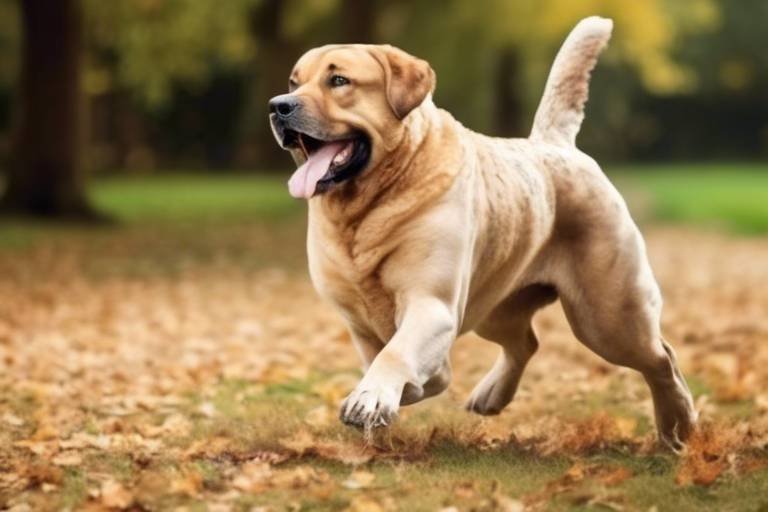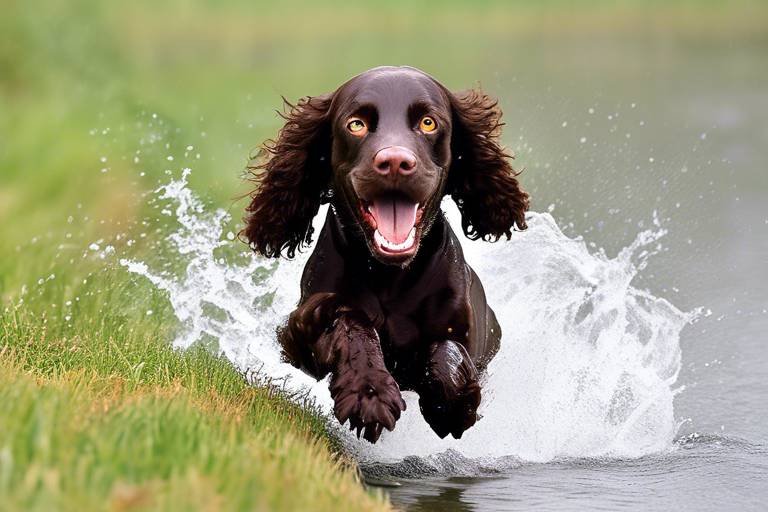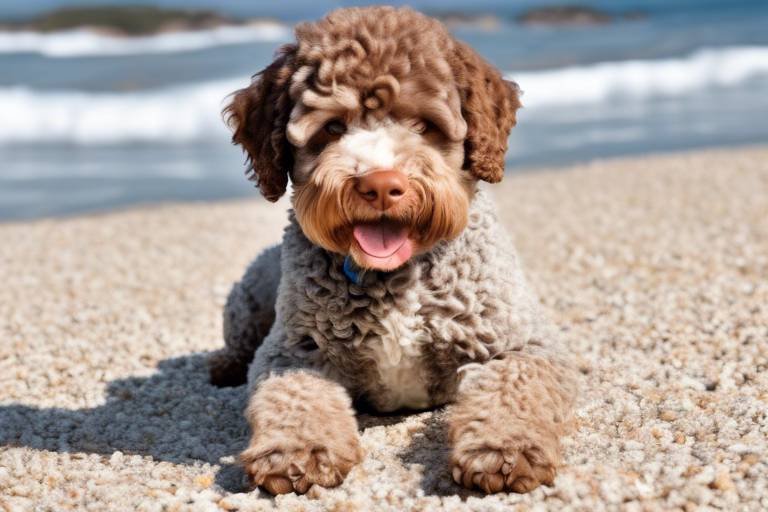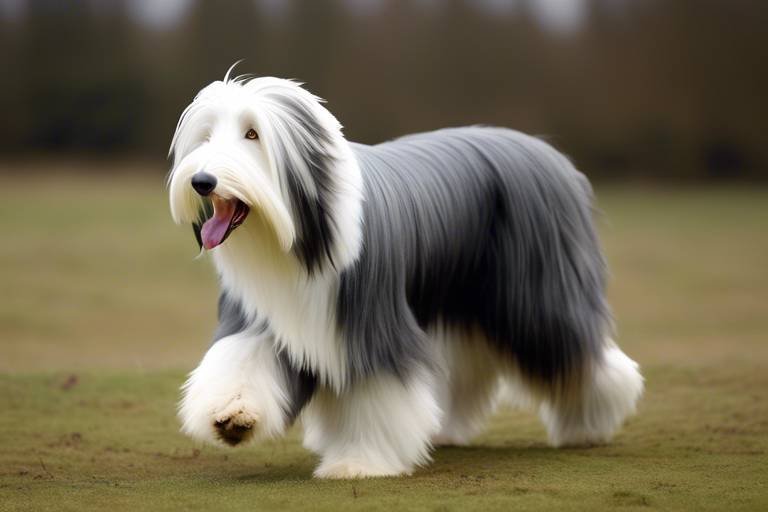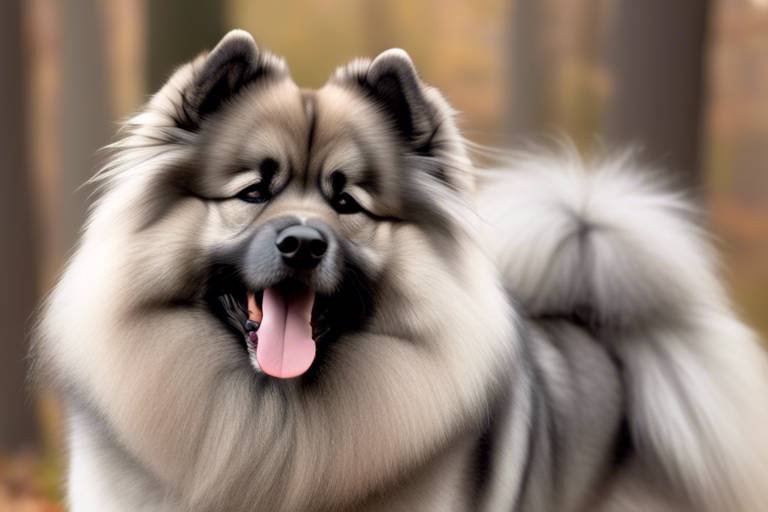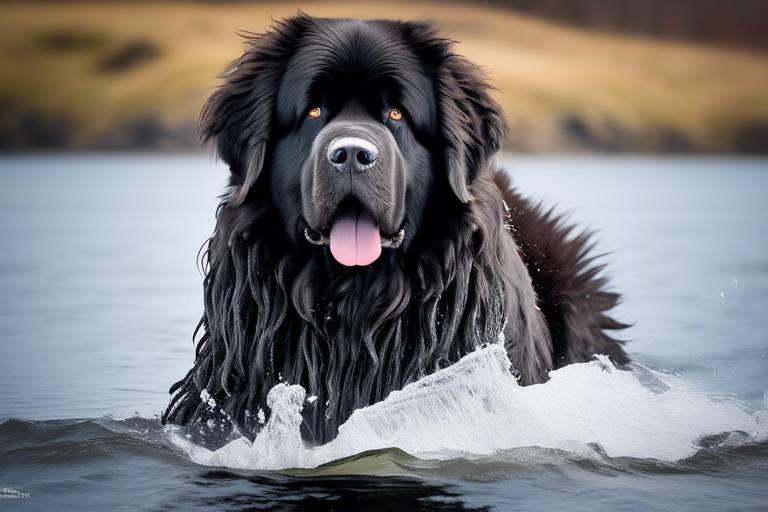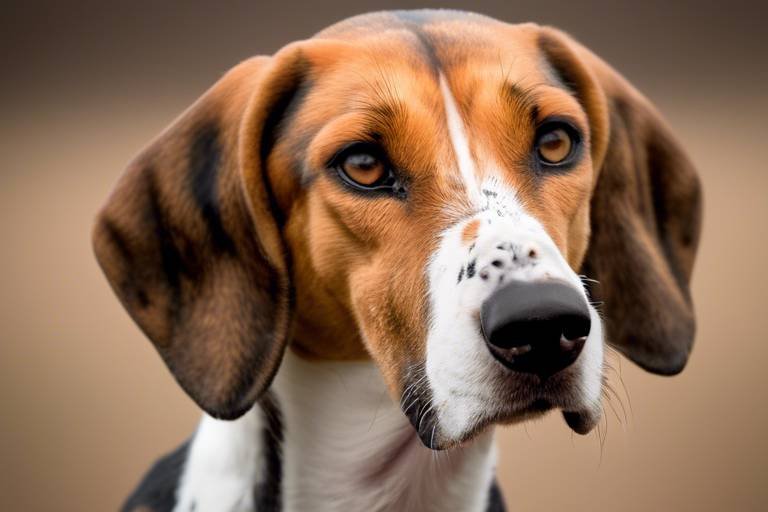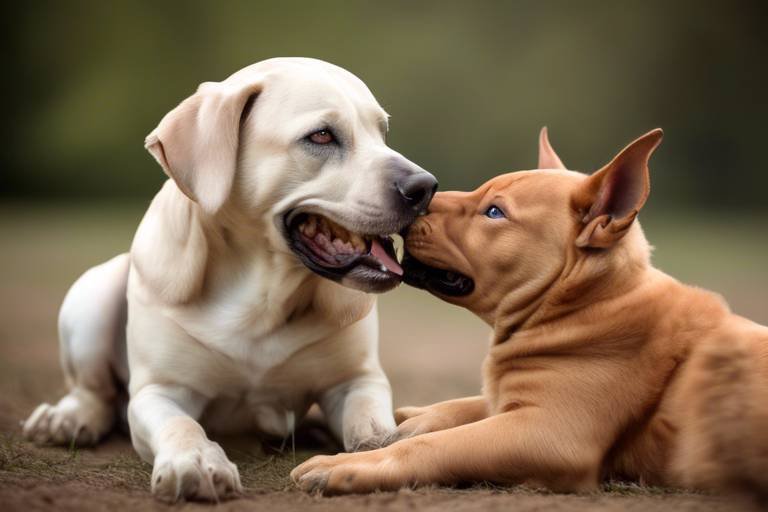The Best Large Dog Breeds for Active Owners
Are you an active person looking for a furry companion to join you on your adventures? If so, you're in the right place! Large dog breeds can be the perfect partners for those who love to stay active, whether it's hiking, running, or just enjoying a day at the park. These dogs not only provide companionship but also encourage you to maintain a healthy lifestyle. Their energy and enthusiasm can be contagious, making every outing an exciting experience.
In this article, we will explore various large dog breeds that are well-suited for active owners. We'll delve into their unique characteristics, exercise needs, and how they can seamlessly fit into an energetic lifestyle. From the friendly and playful Labrador Retriever to the intelligent and loyal German Shepherd, each breed has its own charm and requirements. Understanding these traits is crucial for ensuring a happy and fulfilling relationship with your new four-legged friend.
But before we dive into the specifics of each breed, let’s consider what it really means to choose a large dog. It’s not just about size; it’s about finding a breed that matches your lifestyle, energy levels, and personal preferences. After all, bringing a large dog into your home is a big commitment, and you want to make sure it's the right fit for both you and your future pet.
So, whether you're an avid runner, a weekend hiker, or someone who simply loves to spend time outdoors, there’s a large dog breed out there that can match your energy and enthusiasm. Let’s take a closer look at some of the best large dog breeds for active owners!
When selecting a large dog, it's essential to consider several factors that will impact your decision. Think about your living situation, daily schedule, and the type of activities you enjoy. Here are some key points to keep in mind:
- Activity Level: Different breeds have varying energy levels. Make sure to choose a dog that can keep up with your lifestyle.
- Space: Large dogs typically need more room to roam. Ensure your living environment can accommodate a big dog.
- Time Commitment: Training and exercising a large dog requires time and dedication. Are you prepared for that commitment?
By considering these factors, you can make an informed choice that will lead to a harmonious relationship with your new furry friend. Now, let’s explore some of the top large dog breeds that are ideal for active owners!
Here’s a quick overview of some of the best large dog breeds that thrive in active environments:
The Labrador Retriever is often regarded as the quintessential family dog, and for good reason! Known for their friendly nature and high energy, Labs are excellent companions for active individuals. They require regular exercise and thrive on activities like swimming and fetching. With their playful demeanor, they can turn any outing into a fun adventure. Plus, their intelligence makes them highly trainable, which is a bonus for active owners who want a dog that can learn new tricks and commands quickly.
German Shepherds are another fantastic choice for active owners. These dogs are not only intelligent and loyal but also highly trainable. They excel in various physical activities, making them ideal for those who enjoy a more rigorous lifestyle. Whether it’s running alongside you or participating in agility training, German Shepherds require consistent mental and physical stimulation to stay happy and healthy. Their protective nature also makes them great companions for outdoor adventures, ensuring you have a trusty sidekick by your side.
Understanding the exercise needs of large dog breeds is essential for their health and happiness. These dogs require regular physical activity to maintain their fitness levels and prevent behavioral issues that can arise from boredom. On average, large dogs need at least 1 to 2 hours of exercise daily, which can include walks, playtime, and mental challenges.
Establishing a daily exercise routine is crucial for large dogs. Here are some tips for creating a balanced schedule:
- Start with two walks a day, gradually increasing the distance as your dog builds stamina.
- Incorporate playtime with interactive toys or games like fetch to keep them engaged.
- Consider dog sports or agility training for an extra challenge.
Engaging in fun activities can enhance the bond between you and your large dog. Think about outdoor adventures, games, and training exercises that keep them active and entertained. Activities such as hiking, swimming, and even visiting dog parks can provide excellent opportunities for exercise and socialization.
Q: What is the best large dog breed for families?
A: Labrador Retrievers and Golden Retrievers are often considered the best large dog breeds for families due to their friendly nature and adaptability.
Q: How much exercise do large dogs need?
A: Large dogs typically require at least 1 to 2 hours of exercise daily, depending on the breed and individual energy levels.
Q: Are large dogs good for apartment living?
A: While some large dogs can adapt to apartment living, they generally need ample space to move around. Regular outdoor exercise is crucial to keep them happy.
Q: How can I train my large dog effectively?
A: Consistent training, positive reinforcement, and socialization are key to effectively training a large dog. Start with basic commands and gradually introduce more complex tasks.

When it comes to selecting the perfect large dog, it's essential to align your choice with your lifestyle, living situation, and personal activity levels. After all, a dog is not just a pet; it's a lifelong companion that can either energize your life or become a burden if mismatched. Think of it like finding the right dance partner—if your rhythms don’t sync, the dance can quickly turn into a clumsy shuffle.
First, consider your living space. Do you have a spacious home with a large yard, or are you in a cozy apartment? Large dogs typically need room to roam, so if you live in a smaller space, you might want to look for breeds that are known to adapt well to limited areas. Additionally, think about your daily routine. Are you someone who enjoys outdoor activities like hiking, running, or swimming? If so, you’ll want a breed that thrives on physical activity and has the stamina to keep up with your energetic lifestyle.
Another vital factor to consider is the dog's temperament. Some large breeds are known for their calm demeanor, while others are more exuberant and require constant engagement. For instance, a Labrador Retriever is often described as friendly and playful, making them a great match for active families. On the other hand, a Great Dane might be more laid-back and less demanding in terms of exercise, but they still need regular activity to stay healthy.
It's also essential to evaluate your family situation. Do you have young children or other pets? Some large breeds are more tolerant and gentle, while others may have a strong prey drive or be more protective. A breed like the Golden Retriever is usually very good with kids, while a Rottweiler, though loyal and protective, may require more careful socialization.
To help you visualize the factors to consider, here's a quick table summarizing key aspects:
| Factor | Considerations |
|---|---|
| Living Space | Large yard vs. apartment |
| Activity Level | Your daily routine and outdoor interests |
| Temperament | Calm vs. energetic breeds |
| Family Dynamics | Children and other pets |
In conclusion, taking the time to consider these factors will ensure that you choose a large dog that complements your lifestyle and brings joy to both your life and theirs. Remember, the right dog can become your best friend, adventure buddy, and loyal companion, so choose wisely!

When it comes to choosing the perfect furry companion for your active lifestyle, several large dog breeds stand out from the pack. These breeds not only possess the physical attributes needed to keep up with energetic owners but also have the personality traits that make them delightful companions. Let's dive into some of the best large dog breeds that are tailor-made for those who love to stay on the move!
The Labrador Retriever is undoubtedly one of the most popular large dog breeds, and for good reason. With their friendly disposition and boundless energy, Labradors are the ideal partners for outdoor adventures. They thrive on exercise, requiring at least 1 hour of vigorous activity daily. Whether it’s a game of fetch at the park, a swim in the lake, or a long hike, these dogs are always ready to join you. Their affectionate nature makes them great family pets, and they often get along well with children and other animals.
The German Shepherd is another fantastic choice for active owners. Renowned for their intelligence and loyalty, these dogs are not only great companions but also highly trainable. German Shepherds excel in various physical activities, from agility training to obedience competitions. They require a good amount of exercise—around 1 to 2 hours daily—to keep them mentally stimulated and physically fit. Their protective instincts also make them excellent watchdogs, adding an extra layer of security to your home.
Next on our list is the Golden Retriever. Similar to Labradors, Golden Retrievers are friendly, intelligent, and incredibly sociable. They love to be active and require regular exercise, including daily walks and play sessions. Their playful nature makes them perfect for families, and they often excel in activities like fetch, swimming, and agility training. With their loving demeanor, they are also known to be great therapy dogs, bringing joy to those around them.
Another breed worth mentioning is the Bernese Mountain Dog. While they may look like gentle giants, these dogs are surprisingly energetic and love to be outdoors. They require a moderate amount of exercise—around 30 to 60 minutes daily—and enjoy activities like hiking and pulling carts. Their calm and affectionate nature makes them wonderful family pets, and they are particularly good with children.
If you’re looking for a breed that combines strength and agility, consider the Boxer. Boxers are known for their playful and energetic personalities. They require a solid hour of exercise each day, which can include running, playing fetch, or engaging in agility training. Their loyalty and protective nature make them excellent companions for active individuals, and they thrive on interaction with their owners.
Lastly, the Siberian Husky deserves a mention. These dogs are known for their incredible stamina and love for the outdoors. Huskies require a significant amount of exercise—often 1 to 2 hours daily—and they thrive in active households. Their friendly and outgoing nature makes them great companions, but they are also known for their independent streak, which can make training a bit of a challenge.
To summarize, here’s a quick comparison of the highlighted breeds:
| Breed | Daily Exercise Requirement | Temperament |
|---|---|---|
| Labrador Retriever | 1 hour | Friendly, Affectionate |
| German Shepherd | 1 - 2 hours | Intelligent, Loyal |
| Golden Retriever | 1 hour | Friendly, Intelligent |
| Bernese Mountain Dog | 30 - 60 minutes | Calm, Affectionate |
| Boxer | 1 hour | Playful, Loyal |
| Siberian Husky | 1 - 2 hours | Outgoing, Independent |
Choosing the right large dog breed can significantly enhance your active lifestyle, providing companionship, motivation, and joy. These breeds are not just pets; they become part of your family, sharing in your adventures and encouraging you to stay active. So, which breed resonates with you the most? The choice is yours!
This article explores various large dog breeds that are perfect companions for active owners, highlighting their characteristics, exercise needs, and suitability for energetic lifestyles.
Selecting a large dog requires considering your lifestyle, living situation, and activity level. This section will guide you through the essential factors to keep in mind when choosing a breed.
This section presents a curated list of large dog breeds that thrive in active environments, detailing their temperaments, exercise requirements, and compatibility with energetic owners.
When it comes to large dog breeds that perfectly complement an active lifestyle, the Labrador Retriever stands out as a top contender. Renowned for their friendly demeanor and boundless energy, Labradors are not just pets; they are enthusiastic partners for outdoor adventures. Imagine a dog that greets you with a wagging tail and a playful bark, ready to dive into whatever activity you have planned. Whether it's a long hike, a swim in the lake, or a game of fetch at the park, Labs are always up for the challenge. Their love for water is legendary; many Labradors will leap into any body of water they encounter, making them perfect companions for those who enjoy boating or beach outings.
But it's not just their energy that makes them special. Labradors are also incredibly intelligent and eager to please, which makes training a breeze. They thrive on positive reinforcement and enjoy learning new tricks or commands. This adaptability means they can participate in various activities, from agility training to obedience competitions. With their friendly nature, they are great with children and other pets, making them an ideal choice for families. However, it's important to remember that their high energy levels mean they require regular exercise. A typical Labrador needs at least 1 hour of physical activity daily to keep them healthy and happy. Without sufficient exercise, they can become bored and may exhibit destructive behaviors.
For the active owner, a Labrador Retriever can be the perfect match. Their affectionate nature and playful spirit make them not just a pet but a true companion. If you're considering adding a Labrador to your family, be prepared for a life filled with joy, adventure, and plenty of exercise!
Understanding the exercise needs of large dog breeds is essential for their health and happiness. This section outlines the general activity requirements and recommendations for keeping them fit.
Establishing a daily exercise routine is crucial for large dogs. This subsection provides tips on creating a balanced schedule that includes walks, playtime, and mental stimulation.
Engaging in fun activities can enhance the bond between you and your large dog. This section offers creative ideas for outdoor adventures, games, and training exercises that keep them active and entertained.
Training is vital for large dog breeds, especially for active owners. This section discusses effective training techniques and strategies to ensure good behavior and fitness.
Proper socialization is essential for large dogs to interact well with people and other pets. This subsection covers methods to introduce your dog to various environments and situations.
Obedience training lays the foundation for a well-behaved large dog. This section highlights key commands and training practices that help manage their energy and behavior effectively.
- What is the average lifespan of a Labrador Retriever? The average lifespan of a Labrador Retriever is around 10 to 12 years.
- How much exercise do Labradors need? Labradors typically require at least 1 hour of exercise daily to stay healthy and happy.
- Are Labradors good with children? Yes, Labradors are known for their friendly and gentle nature, making them great companions for children.
- Do Labradors shed a lot? Yes, Labradors are moderate to heavy shedders, especially during seasonal changes.
When it comes to large dog breeds, the German Shepherd stands out as a quintessential companion for active owners. Known for their intelligence and loyalty, these dogs are not just pets; they are family members who thrive in dynamic environments. Imagine a loyal sidekick who is always ready for an adventure, whether it's a brisk morning jog, a hike through the woods, or a game of fetch in the park. With their boundless energy and eagerness to please, German Shepherds are the perfect match for those who lead an active lifestyle.
One of the most appealing traits of the German Shepherd is their trainability. They are quick learners and excel in obedience training, making them ideal candidates for various physical activities. Whether you want to teach them agility, search and rescue, or simply how to fetch a ball, these dogs are up for the challenge. Their high intelligence means they require not just physical exercise, but also mental stimulation. A bored German Shepherd can become destructive, so it's crucial to keep their minds engaged with puzzles, training exercises, and interactive games.
In terms of exercise requirements, German Shepherds need a significant amount of physical activity each day. A general guideline is at least 1 to 2 hours of exercise, which can be broken down into walks, playtime, and training sessions. They thrive on routine, so establishing a daily schedule can help keep them fit and happy. Here’s a quick breakdown of their exercise needs:
| Activity Type | Recommended Duration |
|---|---|
| Daily Walks | 30-60 minutes |
| Playtime (Fetch, Frisbee) | 30-45 minutes |
| Training Sessions | 15-30 minutes |
Moreover, German Shepherds are known for their protective instincts. They naturally take on the role of a guardian, which can be a comforting presence for active families. This protective nature, combined with their loyalty, makes them excellent companions for outdoor adventures. However, it’s essential to socialize them properly from a young age to ensure they are well-adjusted and can interact positively with other dogs and people.
In summary, if you're an active owner looking for a large breed that can keep up with your lifestyle, the German Shepherd is a fantastic choice. With their intelligence, loyalty, and need for physical and mental engagement, they will not only be your companion but also your partner in adventure. So, are you ready to embark on this exciting journey with a German Shepherd by your side?
- How much exercise do German Shepherds need? German Shepherds typically require 1 to 2 hours of exercise daily.
- Are German Shepherds good with children? Yes, when properly socialized, they are known to be great with kids and protective of their family.
- What is the lifespan of a German Shepherd? The average lifespan is around 9 to 13 years, depending on health and care.

Understanding the exercise needs of large dog breeds is essential for their health and happiness. Large dogs, by their very nature, are often bursting with energy and require a significant amount of physical activity to stay fit and mentally stimulated. If you think about it, having a large dog is like owning a small horse; they need room to roam, play, and explore. Failing to meet their exercise requirements can lead to behavioral issues, including excessive barking, chewing, or even aggression.
Generally, large dog breeds need at least 1 to 2 hours of exercise each day. This can include a mix of walks, playtime, and even structured activities like agility training. It's crucial to remember that not all large dogs have the same exercise needs; factors like age, breed, and health can influence how much activity they require. For example, a young Labrador Retriever will have different requirements compared to a senior Great Dane.
To help you understand the exercise needs of various large dog breeds, here’s a simple
| Breed | Daily Exercise Requirement | Best Activities |
|---|---|---|
| Labrador Retriever | 1.5 - 2 hours | Fetching, swimming, running |
| German Shepherd | 1 - 2 hours | Agility training, hiking, obedience training |
| Golden Retriever | 1 - 1.5 hours | Swimming, playing fetch, long walks |
| Rottweiler | 1 - 1.5 hours | Weight pulling, running, obedience training |
Establishing a daily exercise routine is not just about keeping your dog fit; it's also about creating a strong bond between you and your furry friend. Imagine how much more enjoyable your walks can be when you both look forward to exploring new trails or playing fetch in the park. A well-exercised dog is a happy dog, and they are less likely to engage in destructive behaviors. So, how do you create a balanced exercise schedule? It's all about variety!
Mixing up activities can keep things interesting for both you and your dog. For instance, consider incorporating some mental stimulation into their routine. Puzzle toys, scent games, or even basic obedience training can provide a great mental workout. Remember, an active mind is just as important as an active body!
In conclusion, meeting the exercise needs of large dog breeds is crucial for their overall well-being. By understanding their requirements and incorporating a variety of activities into their daily routine, you can ensure that your four-legged companion leads a happy, healthy, and fulfilled life.
- How much exercise does my large dog need? Most large dogs require at least 1 to 2 hours of exercise daily, but this can vary based on age and breed.
- What are some good activities for large dogs? Activities like fetching, swimming, hiking, and agility training are excellent for keeping large dogs engaged.
- Can I exercise my dog indoors? Yes! Indoor activities like fetch, tug-of-war, and puzzle toys can help keep your dog active when outdoor conditions are not ideal.
- What happens if my dog doesn't get enough exercise? Lack of exercise can lead to behavioral problems, obesity, and health issues in large dogs.
Establishing a daily exercise routine for your large dog is not just beneficial—it's essential! Think of it as a recipe for a happy and healthy life. Just like we need our daily dose of activity to stay fit and energized, large dogs thrive on consistent exercise that keeps their bodies and minds engaged. So, how do you create the perfect exercise routine that caters to your furry friend’s needs? Let’s break it down.
First, consider the age, breed, and energy level of your dog. Puppies and young adults typically need more exercise than senior dogs. For example, a rambunctious Labrador Retriever will likely require more playtime than a laid-back Great Dane. A good rule of thumb is to aim for at least 1 to 2 hours of exercise each day, but this can vary based on your dog's specific needs.
Now, let’s dive into the components of a balanced daily exercise routine. You might want to include a mix of activities such as:
- Walking: A brisk walk not only helps burn energy but also provides mental stimulation as your dog explores the environment.
- Running: If you’re a runner, consider taking your dog along. Just make sure to start slow and build up their stamina.
- Playtime: Engaging in fetch or tug-of-war can be a fantastic way to bond while keeping your dog active.
- Training Sessions: Incorporating training into your routine helps stimulate your dog mentally while also reinforcing good behavior.
To help you visualize a potential daily schedule, here’s a simple table that outlines a balanced routine:
| Time of Day | Activity | Duration |
|---|---|---|
| Morning | Brisk Walk | 30 minutes |
| Midday | Play Fetch | 20 minutes |
| Afternoon | Training Session | 15 minutes |
| Evening | Long Walk or Jog | 45 minutes |
Keep in mind that this is just a sample routine. Feel free to adjust the timings and activities to fit your lifestyle and your dog’s preferences. Also, remember to incorporate rest days to allow your dog to recover, especially if you’re just starting out or if they’re older.
Lastly, always pay attention to your dog’s behavior during and after exercise. If they seem overly tired or reluctant to engage, it might be time to scale back a bit. Just like us, dogs have their limits, and recognizing those limits is key to ensuring a long, healthy life together.
1. How much exercise does a large dog need daily?
Most large dogs require at least 1 to 2 hours of exercise each day, depending on their age and energy level.
2. Can I take my dog running with me?
Yes! Running can be a great way to exercise together, but make sure to gradually build up your dog's stamina.
3. What if my dog doesn’t seem to enjoy exercise?
It's important to find activities that your dog enjoys. Experiment with different games or types of exercise to see what excites them!
4. Are there any signs that my dog is over-exercising?
Signs of over-exercising include excessive panting, lethargy, or reluctance to continue playing. Always monitor your dog during exercise.
When it comes to keeping your large dog happy and engaged, the possibilities are as vast as the great outdoors! Large dogs, with their boundless energy and playful spirits, thrive on activities that challenge both their body and mind. Think of your dog as a co-pilot on an adventure; the more exciting the journey, the more fun you both will have! So, what can you do to ensure your furry friend stays active and entertained? Let’s dive into some fantastic activities that will not only keep your dog fit but also strengthen the bond between you two.
First off, nothing beats a good old-fashioned game of fetch. This classic activity is a staple for a reason! Grab a sturdy ball or a frisbee, and head to your local park or backyard. Large breeds like Labrador Retrievers and German Shepherds are especially fond of this game, as it allows them to run freely and burn off that excess energy. Just imagine the joy on their faces as they sprint after the ball, tail wagging like a flag in the wind!
Another exhilarating option is going for hikes. Large dogs usually have the stamina to tackle longer trails, making hiking an ideal way to explore nature together. You can even make it a social outing by inviting fellow dog owners to join you. Just remember to bring plenty of water for both you and your pup, and don’t forget to pack some tasty treats to reward them for their hard work!
If you’re looking for something a bit more structured, consider agility training. This activity is not only physically demanding but also mentally stimulating. Setting up an agility course in your backyard or joining a local training class can provide your dog with the challenge they crave. Imagine your dog weaving through cones, jumping over hurdles, and navigating tunnels—all while you cheer them on! It’s a fantastic way to channel their energy into something productive.
Lastly, let’s not overlook the fun of swimming! Many large breeds are natural swimmers and love to splash around in the water. Whether it’s a trip to a dog-friendly beach or a dip in a pool, swimming is a low-impact exercise that allows your dog to cool off while getting a great workout. Just keep an eye on them to ensure they’re safe and having fun!
To wrap it all up, here’s a quick overview of some fun activities you can enjoy with your large dog:
| Activity | Description |
|---|---|
| Fetch | A classic game that encourages running and retrieving. |
| Hiking | Exploring nature trails together for physical and mental stimulation. |
| Agility Training | Structured courses that challenge your dog’s physical and mental abilities. |
| Swimming | A fun, low-impact exercise that many large dogs enjoy. |
Incorporating these activities into your routine will not only keep your large dog healthy and happy but also create lasting memories together. So, grab your leash, put on your sneakers, and get ready for some tail-wagging adventures!
- What are some signs my dog needs more exercise? Look for signs such as restlessness, excessive barking, or destructive behavior. If your dog seems bored, it might be time to ramp up their exercise routine!
- How much exercise does a large dog need daily? Generally, large dogs require at least 1 to 2 hours of exercise each day, but this can vary based on the breed and individual energy levels.
- Can I take my large dog on a run with me? Absolutely! Many large breeds make excellent running partners, but be sure to start slowly and gradually increase the distance to avoid injury.
- What should I do if my dog doesn’t enjoy certain activities? Every dog is unique! Experiment with different activities and pay attention to what excites them. It’s all about finding the right fit for your furry friend!

Training large dogs is not just a necessity; it's a vital part of ensuring they thrive in an active household. Imagine having a big, energetic companion that not only keeps you on your toes but also understands your commands and expectations. This is where effective training comes into play. It's essential to establish a structured training regimen that not only focuses on obedience but also incorporates physical activity and mental stimulation. After all, a well-trained dog is a happy dog, and a happy dog is a joy to have around!
When it comes to training large breeds, consistency is key. Large dogs, such as the Labrador Retriever or German Shepherd, require regular training sessions that are both engaging and rewarding. Start with basic commands like sit, stay, and come. These commands form the foundation of a well-behaved dog and are crucial for their safety, especially when they're out and about. You can gradually introduce more complex commands as they master the basics.
In addition to obedience training, socialization is another critical aspect. Large dogs can be intimidating, and without proper socialization, they may develop behavioral issues. Exposing them to various environments, people, and other pets helps them become well-rounded companions. Consider enrolling your dog in group classes where they can interact with others in a controlled setting. This not only helps with their social skills but also provides an opportunity for you to learn from experienced trainers.
One effective training technique is to incorporate positive reinforcement. Rewarding your dog for good behavior with treats, praise, or playtime creates a positive association with the desired action. For instance, if your dog responds well to a command during a walk, reward them immediately. This method encourages them to repeat the behavior, making training a fun and rewarding experience for both of you.
To help you get started, here’s a brief overview of some essential training techniques:
| Training Technique | Description |
|---|---|
| Positive Reinforcement | Rewarding desired behaviors to encourage repetition. |
| Clicker Training | Using a clicker to mark desired behaviors followed by a reward. |
| Leash Training | Teaching your dog to walk politely on a leash without pulling. |
| Impulse Control | Training your dog to wait for cues before acting on impulses. |
Don't forget that training should also be a part of your dog's daily exercise routine. Incorporating training into playtime can be a great way to keep them engaged. For example, you can set up an obstacle course in your backyard and use commands to guide your dog through it. This not only provides physical exercise but also challenges their mind, keeping them sharp and focused.
Lastly, patience is paramount. Large dogs may take a bit longer to train compared to smaller breeds, but with dedication and persistence, you will see progress. Celebrate the small victories along the way, and remember that training is a continuous journey. The bond you build through training will deepen your relationship and ensure that your large dog is not only a part of your active lifestyle but an integral, well-behaved member of your family.
- How often should I train my large dog? It's best to train your dog daily, even if it's just for short sessions. Consistency is key!
- What age should I start training my large dog? You can start training as early as 8 weeks old. Early socialization is crucial for their development.
- Can I train my large dog myself? Absolutely! With the right resources and commitment, you can effectively train your dog at home.
- How long should training sessions be? Keep sessions short and engaging, around 5-10 minutes for puppies and up to 15-20 minutes for adult dogs.
Socialization is one of the most critical aspects of raising a large dog, especially for active owners who want their furry friends to thrive in various environments. Think of socialization as a dog's passport to the world; the more stamps they collect, the better they adapt to new experiences. It’s about teaching your dog how to behave appropriately around people, other dogs, and different situations. So, how do you effectively socialize your large dog? Here are some essential techniques to consider:
First and foremost, start early. Puppies are like sponges, soaking up every experience they encounter. The critical window for socialization is between 3 and 14 weeks of age. During this period, expose your puppy to a variety of people, environments, and other animals. Take them to parks, pet stores, and even busy streets. The more diverse the experiences, the more well-rounded your dog will be. If you adopt an older dog, don’t fret! It's never too late to begin socializing, but it may require a bit more patience and effort.
Another effective technique is to use positive reinforcement. Whenever your dog encounters a new situation or meets someone new, reward them with treats or praise for calm behavior. This method helps them associate new experiences with positive outcomes, making them more likely to approach new situations with confidence. For instance, if your dog meets a friendly stranger and remains calm, shower them with affection and a tasty treat. This simple act reinforces their good behavior and encourages them to repeat it in the future.
Additionally, consider enrolling your large dog in puppy or obedience classes. These classes not only provide structured socialization opportunities but also allow your dog to interact with other dogs under the guidance of a professional trainer. It’s a win-win situation! Your dog gets to learn essential skills while also making new friends. Moreover, these classes can help you, as an owner, learn effective techniques for managing your dog’s energy and behavior.
Don't underestimate the power of frequent exposure. Regularly take your dog to different environments—busy parks, pet-friendly cafes, or even dog-friendly events. Each outing is an opportunity for your dog to encounter new sights, sounds, and smells. This ongoing exposure will help them become adaptable and less reactive to new experiences as they grow. Always remember to keep these experiences positive and stress-free.
Finally, practice controlled interactions. When introducing your dog to new animals or people, do so in a controlled manner. Use a leash and allow your dog to observe from a distance before moving closer. This method gives them time to acclimate to the new presence without feeling overwhelmed. Gradually decrease the distance as your dog becomes more comfortable, ensuring that each interaction is positive and rewarding.
In summary, socialization is a vital part of raising a large dog, especially for those with active lifestyles. By starting early, using positive reinforcement, attending classes, exposing them to various environments, and practicing controlled introductions, you can help your dog become a well-adjusted and confident companion. Remember, a well-socialized dog is not only happier but also a better companion for your active adventures!
Q: What is the best age to start socializing my dog?
A: The best age to start socializing your dog is between 3 and 14 weeks. However, older dogs can still learn and benefit from socialization.
Q: How can I tell if my dog is properly socialized?
A: A well-socialized dog will be calm and confident in new situations, friendly towards people and other dogs, and will not show signs of fear or aggression.
Q: Can I socialize my dog too much?
A: While socialization is essential, overexposure to stressful situations can overwhelm your dog. It’s crucial to ensure that experiences are positive and not too frequent.
When it comes to raising a large dog, obedience training is not just a luxury; it's an absolute necessity. Imagine having a powerful breed like a German Shepherd or a Labrador Retriever bounding through your home without any training—chaos would ensue! Obedience training lays the groundwork for a well-mannered dog, ensuring they can coexist peacefully in your home and community. The goal is to cultivate a dog that listens to commands and behaves appropriately in various situations, making life easier for both of you.
One of the first steps in obedience training is teaching your dog basic commands. These commands are crucial for managing their behavior and keeping them safe. Here are some essential commands to focus on:
- Sit: A fundamental command that helps establish control.
- Stay: Keeps your dog in place, preventing them from running off.
- Come: Ensures your dog returns to you, especially in potentially dangerous situations.
- Leave it: Teaches your dog to ignore distractions, which is vital for their safety.
- Heel: Helps your dog walk calmly beside you without pulling.
Consistency is key in obedience training. Dogs thrive on routine, and using the same commands and cues every time will help them learn faster. For instance, if you say "sit" one day and "sit down" the next, your dog will get confused. Use clear, concise commands and reward your dog with treats or praise when they follow through. This positive reinforcement builds a strong bond and motivates them to repeat the desired behavior.
Another important aspect of obedience training is socialization. Large dogs need to learn how to interact with other dogs and people. Gradually expose your dog to different environments, sounds, and situations. This could include trips to the park, visits to pet-friendly stores, or playdates with other dogs. The more experiences your dog has, the more confident and well-adjusted they will become.
Training sessions should be engaging and fun! Large dogs, especially, can become bored quickly if the training is monotonous. Incorporate games into your training routine. For example, you can turn the "come" command into a fun game of hide and seek. Call your dog, hide somewhere in the house, and reward them when they find you. This not only reinforces the command but also strengthens your bond.
Finally, remember that patience is essential. Every dog learns at their own pace, and some may take longer than others to grasp certain commands. Celebrate small victories along the way and don't get discouraged. If you find yourself struggling, consider enrolling in a training class. Professional trainers can offer valuable insights and techniques that will benefit both you and your dog.
In summary, obedience training is a vital part of raising a well-behaved large dog. By focusing on essential commands, maintaining consistency, ensuring proper socialization, and keeping training sessions fun, you can cultivate a loyal and obedient companion who enhances your active lifestyle.
Q: How long should training sessions be?
A: Training sessions should typically last between 5 to 15 minutes, depending on your dog's attention span. Keep it short and engaging to maintain their interest.
Q: At what age should I start training my large dog?
A: It's best to start training your dog as early as possible, ideally when they're a puppy. However, older dogs can also be trained; it's never too late to start!
Q: What if my dog doesn't respond to commands?
A: If your dog isn't responding, it may be due to distractions or a lack of motivation. Try training in a quiet environment, and use high-value treats to keep their focus.
Q: How can I tell if my dog is ready for more advanced training?
A: If your dog consistently follows basic commands and shows good focus during training, they are likely ready for more advanced techniques. Always build on their successes!
Frequently Asked Questions
- What are the best large dog breeds for active owners?
Some of the top large dog breeds for active owners include the Labrador Retriever, German Shepherd, Golden Retriever, and Siberian Husky. These breeds are known for their energy levels and love for outdoor activities, making them perfect companions for those who enjoy an active lifestyle.
- How much exercise do large dog breeds need?
Large dog breeds typically require at least 1 to 2 hours of exercise each day. This can include walks, runs, playtime, and mental stimulation activities. It's essential to tailor their exercise routine to their specific breed and energy levels to keep them happy and healthy.
- Are large dogs suitable for families?
Absolutely! Many large dog breeds are known for their friendly and gentle nature, making them great family pets. Breeds like the Golden Retriever and Labrador Retriever are particularly known for being good with children and other pets.
- What should I consider when choosing a large dog?
When selecting a large dog, consider factors such as your living situation, activity level, and the dog's exercise needs. It's important to choose a breed that fits well with your lifestyle, so you can provide the necessary care and attention they require.
- How can I train my large dog effectively?
Training a large dog involves consistency and positive reinforcement. Start with basic commands like sit, stay, and come, and gradually introduce more advanced training. Socialization is also crucial, so expose your dog to different environments and situations to help them become well-adjusted.
- What are some fun activities I can do with my large dog?
Engaging your large dog in fun activities can strengthen your bond. Consider going on hikes, playing fetch, swimming, or participating in dog sports like agility training. These activities not only provide exercise but also mental stimulation, keeping your dog happy and healthy.
- How can I ensure my large dog gets enough mental stimulation?
Mental stimulation is just as important as physical exercise. You can provide this through puzzle toys, training sessions, and interactive games. Activities that challenge their minds will help prevent boredom and destructive behavior.

